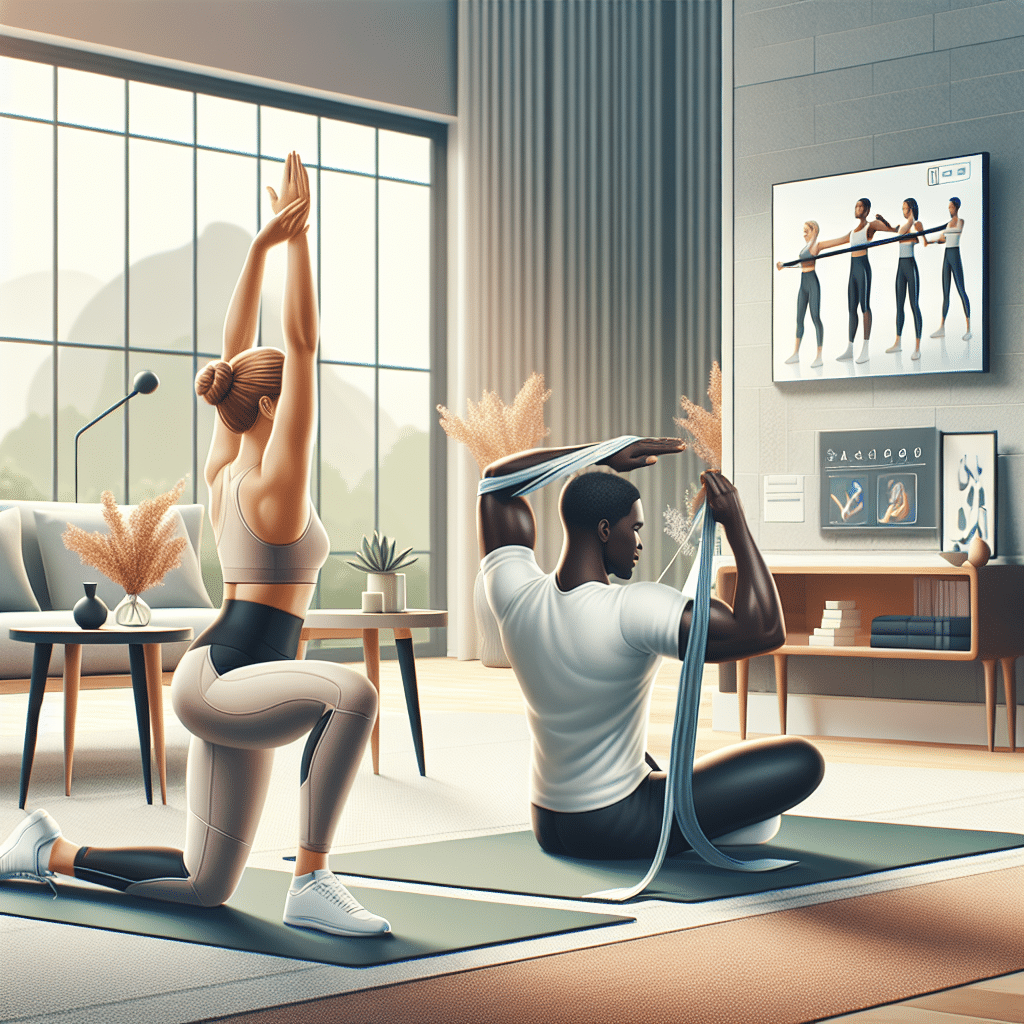Daily Flexibility Exercises for Beginners
Why Flexibility Matters
Flexibility is an essential component of physical fitness. It improves the range of motion in joints, reduces the risk of injury, enhances athletic performance, and promotes better posture. Incorporating flexibility exercises into your daily routine can significantly benefit your overall health and well-being.
Getting Started with Flexibility Exercises
Before beginning any flexibility routine, it’s important to warm up. A quick 5-10 minute warm-up, such as walking briskly or light jogging, raises body temperature and prepares muscles for stretching.
1. Neck Stretch
Targets: Neck muscles
Duration: 15-30 seconds each side
Instructions:
- Sit or stand up straight.
- Slowly tilt your head to the right, bringing your ear toward your shoulder.
- Hold for 15-30 seconds and switch sides.
2. Shoulder Stretch
Targets: Shoulders, upper back
Duration: 15-30 seconds each side
Instructions:
- Stand tall and reach your right arm across your body.
- Use your left hand to gently pull your right arm closer to your chest.
- Hold for 15-30 seconds, then switch arms.
3. Triceps Stretch
Targets: Triceps, shoulders
Duration: 15-30 seconds each side
Instructions:
- Raise your right arm overhead, bend the elbow, placing your hand behind your neck.
- Use your left hand to gently push down on your right elbow.
- Hold for 15-30 seconds, then switch arms.
4. Chest Stretch
Targets: Chest, shoulders
Duration: 15-30 seconds
Instructions:
- Stand with feet shoulder-width apart.
- Clasp your hands behind your back and straighten your arms.
- Lift your arms slightly while opening your chest and pushing your shoulders back.
- Hold for 15-30 seconds.
5. Cat-Cow Stretch
Targets: Spine, back
Duration: 1 minute
Instructions:
- Begin on all fours with your wrists beneath your shoulders and knees beneath your hips.
- Inhale as you arch your back (Cat), lifting your head and tailbone.
- Exhale as you round your back (Cow), tucking your chin to your chest.
- Repeat this cycle for one minute.
6. Seated Forward Bend
Targets: Hamstrings, back
Duration: 30 seconds
Instructions:
- Sit on the ground with your legs extended straight in front of you.
- Inhale and reach upward with your arms.
- Exhale as you bend forward from your hips, reaching toward your toes.
- Hold the stretch, feeling it in your hamstrings and back.
7. Butterfly Stretch
Targets: Inner thighs, hips
Duration: 30 seconds
Instructions:
- Sit on the floor with the soles of your feet together, allowing your knees to fall outward.
- Hold your feet while gently pressing your knees toward the ground.
- Keep your back straight and lean forward slightly to deepen the stretch.
8. Figure Four Stretch
Targets: Hips, glutes
Duration: 30 seconds each side
Instructions:
- Lie on your back with your knees bent.
- Cross your right ankle over your left knee to create a “4” shape.
- Gently pull your left thigh toward your chest, feeling the stretch in your right hip.
- Hold 30 seconds and switch sides.
9. Standing Quadriceps Stretch
Targets: Quadriceps
Duration: 15-30 seconds each side
Instructions:
- Stand tall and grab your right ankle behind you.
- Gently pull your ankle toward your glutes until you feel a stretch in the front of your thigh.
- Keep your knees close together and hold for 15-30 seconds before switching sides.
10. Calf Stretch
Targets: Calves
Duration: 15-30 seconds each side
Instructions:
- Stand facing a wall with your hands pressed against it.
- Step your right foot back, keeping it straight, and bend your left knee.
- Hold the position, feeling the stretch in your right calf for 15-30 seconds, then switch legs.
Creating a Routine
To maximize the benefits, aim for 10-15 minutes daily to practice these stretches. Consistency is key; regular flexibility training will yield the best results over time. You can integrate these exercises into your morning routine, post-workout, or as a standalone flexibility session.
Tips for Improvement
- Breathe Deeply: Never hold your breath while stretching. Inhale and exhale deeply through your nose and mouth to help release tension.
- Don’t Force the Stretch: Stretch to the point of mild discomfort, not pain. Forcing stretches can lead to injury.
- Stay Hydrated: Drink plenty of water before and after your stretching routine to keep muscles hydrated.
- Use Props: If you can’t reach your toes, use a strap or towel. This allows you to get the stretch without compromising form.
- Listen to Your Body: Pay attention to how your body feels. If a stretch doesn’t feel right, stop and adjust your position.
Tracking Progress
Consider keeping a flexibility journal to track your progress. Note the stretches you perform, duration, and any improvements in range of motion. Over time, you’ll gain insight into your flexibility journey, which can be incredibly motivating.
Resources for Further Learning
To deepen your understanding of flexibility training, consider exploring resources such as:
- YouTube Channels: Look for channels focusing on yoga and stretching.
- Apps: Flexibility and yoga apps offer guided sessions and custom routines.
- Online Courses: Enroll in online courses focusing on flexibility techniques tailored for beginners.
Developing flexibility is a rewarding journey that improves comfort, reduces stress, and enhances physical performance. Start small, stay consistent, and gradually increase the intensity and duration of your stretches for optimal results.
